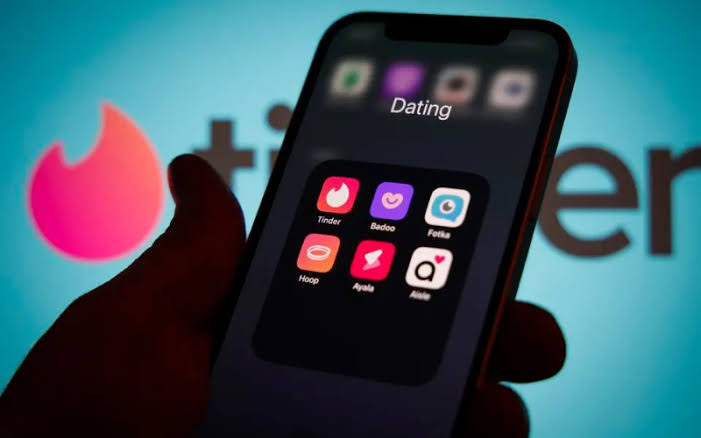
Love knows no boundaries—but that doesn’t mean distance isn’t difficult. Long-distance relationships (LDRs) test patience, trust, and emotional connection in ways many couples never have to face.
But with the right mindset, communication strategies, and commitment, long-distance love can not only survive—it can thrive.
Whether you’re separated by cities, countries, or continents, understanding the challenges and actively working to overcome them is key to making your relationship successful and fulfilling.
Why Do People Enter Long-Distance Relationships?
Long-distance relationships are more common than ever, thanks to:
- Job relocations or military deployments
- Educational opportunities (studying abroad, college in different states)
- Online dating (meeting someone from a different place entirely)
- Immigration or visa restrictions
- Temporary circumstances (travel, family emergencies, etc.)
Despite the challenges, many choose to stay committed because they believe in the connection, the potential of the relationship, and the future they envision together.
Read Also: What is Phileo love (The Love of Friendship)
Common Challenges In Long-Distance Relationships
Long-distance relationships aren’t for the faint of heart. They require extra effort and emotional resilience. Here are the most common obstacles couples face:
1. Lack of Physical Presence
The most obvious challenge is not being able to hug, kiss, or simply sit next to your partner. This lack of physical intimacy can feel lonely or frustrating over time.
2. Time Zone Differences
If you’re in completely different parts of the world, syncing schedules can be tough. One person may be starting their day while the other is going to bed.
3. Communication Gaps
Without facial expressions and body language, messages can be misinterpreted. Texts and even calls can lead to misunderstandings.
4. Jealousy and Trust Issues
Being apart can stir insecurities. You may wonder what your partner is doing, who they’re with, or if they’re still as committed as you are.
5. Different Lifestyles
When you’re living separate lives, it can feel like you’re drifting apart. Social circles, career growth, and life experiences may no longer align as easily.
6. Cost of Travel
Visits aren’t always easy or cheap. Long flights or visa limitations can make reunions infrequent and stressful.
Tips for Making a Long-Distance Relationship Work
The good news? Distance doesn’t have to destroy your relationship. Many couples come out of LDRs stronger, more communicative, and deeply connected.
Here’s how to make it work:
1. Set Clear Expectations
Discuss your goals as a couple. Are you planning to eventually live in the same city? Is the distance temporary or indefinite?
Key questions to ask:
- How often will we communicate?
- Are we exclusive?
- How often will we visit each other?
- What’s our long-term plan?
When both people are on the same page, it reduces anxiety and misunderstandings.
2. Prioritize Communication
Strong communication is the backbone of any healthy relationship—and it’s vital in a long-distance one.
Tips for effective communication:
- Schedule regular calls (daily, every other day—whatever works for you)
- Use video chats to maintain intimacy and connection
- Mix it up with texts, voice notes, surprise photos, or even handwritten letters
- Avoid over-texting—you don’t need to be glued to your phone to feel close
Make conversations intentional, not obligatory. Ask about each other’s day, emotions, and even the small things—like what they had for lunch.
3. Build Trust
Trust isn’t given—it’s built, especially at a distance.
Ways to build and maintain trust:
- Be consistent in your communication
- Be honest about your feelings, even the hard ones
- Avoid secrecy—be open about your friends, plans, and life
- Don’t play games or use silence as punishment
Jealousy or fear is natural, but it shouldn’t dominate the relationship. Reassure each other and discuss boundaries if needed.
4. Stay Emotionally Connected
You don’t have physical proximity, so it’s even more important to maintain emotional intimacy.
Try:
- Date nights via video call (watch a movie together, play games online, cook the same meal)
- Sharing playlists, books, or articles that remind you of each other
- Daily rituals, like a good morning or goodnight message
- Celebrating milestones and anniversaries creatively
Even little efforts help you feel emotionally close.
5. Keep a Shared Vision
One of the hardest parts of a long-distance relationship is uncertainty. A shared goal or end date can give your relationship purpose and direction.
Talk about:
- Where you both want to live
- Career goals and how they align
- Plans to close the distance
- What life might look like together in 1–5 years
When both partners are working toward the same future, the present challenges feel more manageable.
6. Visit Each Other When Possible
In-person visits are essential. They rekindle the spark, strengthen the bond, and remind you both of what you’re working for.
When you do visit:
- Treat it like a mini-vacation, but also experience everyday life together (grocery shopping, working from home)
- Talk about how you felt during the visit and what it taught you
If distance makes the heart grow fonder, visits help keep that heart grounded.
7. Embrace Independence
Just because you’re committed doesn’t mean you should pause your life. A healthy long-distance relationship includes two individuals pursuing their own goals.
Use the time apart to:
- Build your career or education
- Explore hobbies or travel
- Nurture friendships and family connections
- Work on personal growth and self-care
Ironically, couples who maintain a sense of independence often have stronger, healthier bonds.
8. Plan for Challenges, Not Perfection
There will be miscommunications, missed calls, and moments of doubt. Don’t panic when things aren’t perfect.
Instead:
- Talk openly about problems without blame
- Apologize when necessary
- Be willing to adjust expectations as life changes
Successful long-distance couples are flexible and forgiving—not rigid or reactive.
Pros of Long-Distance Relationships
While they come with struggles, long-distance relationships can also offer unique benefits:
1. Stronger Communication Skills
You’re forced to talk more, listen better, and express emotions clearly—skills many in-person couples neglect.
2. Deeper Emotional Connection
Without physical distraction, the relationship often becomes more emotionally intimate and mentally stimulating.
3. Time for Self-Development
You have more time for personal goals, friendships, and self-reflection—without sacrificing your relationship.
4. Appreciation for Time Together
When you do reunite, the time feels extra meaningful. You don’t take each other for granted.
When Long-Distance Doesn’t Work
Despite best efforts, some long-distance relationships may not survive. And that’s okay.
Signs it may not be working:
- One or both partners consistently feel neglected or anxious
- There’s a breakdown of trust or communication
- Neither is willing to compromise or plan for a future together
- Visits no longer bring joy, only pressure
- Emotional distance begins to outweigh physical distance
If you find yourself constantly unhappy or unfulfilled, it might be time to reassess. Sometimes, letting go is an act of love too.
Conclusion
Long-distance relationships require more than love—they require trust, effort, clarity, and a shared commitment to the future.
Yes, the road can be bumpy, but distance doesn’t have to be a dealbreaker. In fact, many couples find that it deepens their bond, sharpens their communication, and prepares them for a stronger future together.
The key is to stay connected emotionally, keep growing individually, and never lose sight of the reason you’re holding on: because the love you share is worth the distance.




